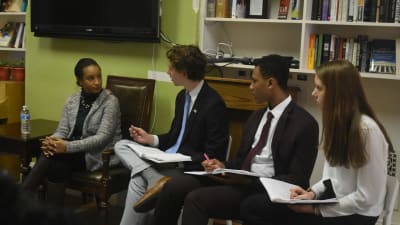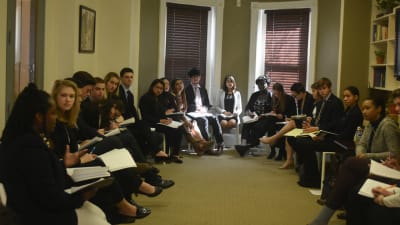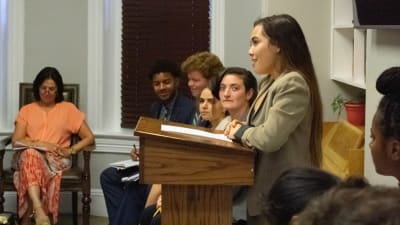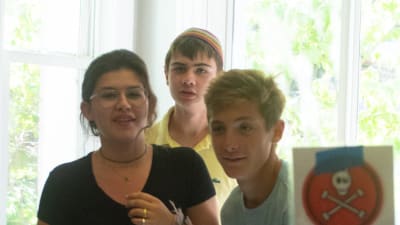Spring 2018 and Climate Change: Part I (Student Blog Post!)

Editor’s Note: This week SEGL student Josh L. (from Dallas, Texas) is taking over as guest blogger.
Climate change is perhaps the defining issue of our generation: as its effects grow larger, it will affect every person on this planet. And it is clear that we will have to be the generation that tries to stop it before it can wreak utter havoc.
That is why I was so excited to begin this week’s case study on climate change. The week was all the more special because we were making SEGL history: we are the first semester with a case study on global climate change. In short, it turned out fantastically.
The astounding complexity of climate change
means that there are a ton of different
entities within the U.S. government that work on it. To help us prepare
for our guest speakers, who come from different parts of that bureaucracy, our week
began on Monday with a brief introduction to how certain parts of the government,
especially the Executive Office of the President and the executive agencies, work.
On Wednesday, armed with that background knowledge, we welcomed Brandi
Colander, who served as Deputy General Counsel for the White House
Council on Environmental Quality (also known as CEQ), the organization within the
government responsible for advising the president on environmental
issues and helping ensure that federal agencies abide by environmental regulations. Ms.
Colander served for several years under President Obama, before moving on to serve at
the Department of the Interior.
During our time with her, Ms. Colander explained the ins and outs of how the government works to protect the environment, and detailed many of the challenges that she and her colleagues faced, from helping regions heavily dependent on coal to working with people who deny the very existence of climate change.
All in all, we greatly enjoyed our meeting with Ms. Colander, and every one of us was truly impressed by her extensive knowledge of every part of every climate-related issue. Personally, I also found many of the insights she offered about the direction that climate policy needs to go in the U.S. to be very valuable.
At the end of the session, Ms. Colander left us with a charge: when we encounter people with whom we disagree about how to deal with climate change, engage them, so that we can all work towards a better future. She added that she maintains optimism in our future, largely because of the power we as students and future leaders have. It was an inspiring end to a very valuable conversation.
Our next guest speaker joined us on Friday afternoon, when we were honored to welcome Trigg Talley, who as the Director of the Office of Global Change at the Department of State, is effectively the top U.S. State Department negotiator on climate change. In his work at State, he was one of the principal negotiators for the Paris Agreement and the further conferences that decided on its implementation.
Mr. Talley spent much of his time with us explaining what it was like to try to get 190 countries to sit down together and sign on to one of the largest international agreements in recent history. Among the challenges we discussed were how, as the world’s largest historical emitter, the U.S. is perceived in these negotiations, as well as how we worked with China in advance of the Paris Agreement to make it more credible.
Personally, I learned a great deal about how difficult it was to come to a consensus, considering the competing interests from every country on the planet, from the small island nations who are greatly concerned about how climate change will affect them to the developing countries who view resources such as coal as integral to their future development.
The clearest lesson, though, was that this is truly an international issue: as hard as we might try (and I would argue, must try) here in the U.S., we won’t be able to protect our planet from catastrophe without a great deal of collaboration from every country on Earth.
In all, this was certainly an exciting week, and each of us were truly
lucky to be a part of
this important moment in SEGL history. Our climate change case study is
not over yet, though, as in early April (once we return from Spring
Break), we will have the opportunity to meet with Khary Cauthen, who
served at CEQ under President George W. Bush, and who will provide us
with yet another perspective on the different approaches to climate
change that our government has taken. (Our teachers have also told us
that we will have one more speaker for this case study, but for now,
they’re keeping the details a mystery!)
As is always the case at SEGL, though, there was plenty else going on this week. One of the highlights was a simulation of the election of 1912, which involved all of the U.S. History students and developed throughout the week. Initially, everyone was divided into four groups, each representing the campaign of one of the major candidates for president (Woodrow Wilson, Theodore Roosevelt, William Howard Taft, and Eugene Debs).
Throughout the week, everyone prepared campaign speeches, designed campaign posters, and put together campaign videos in an effort to convince each other that their candidate was the best (all while remaining historically accurate, of course!). This culminated on Friday, when everyone delivered their final speeches and explained their campaign strategy to an audience of each other and the students not taking U.S. History (who represented electors in the Electoral College).
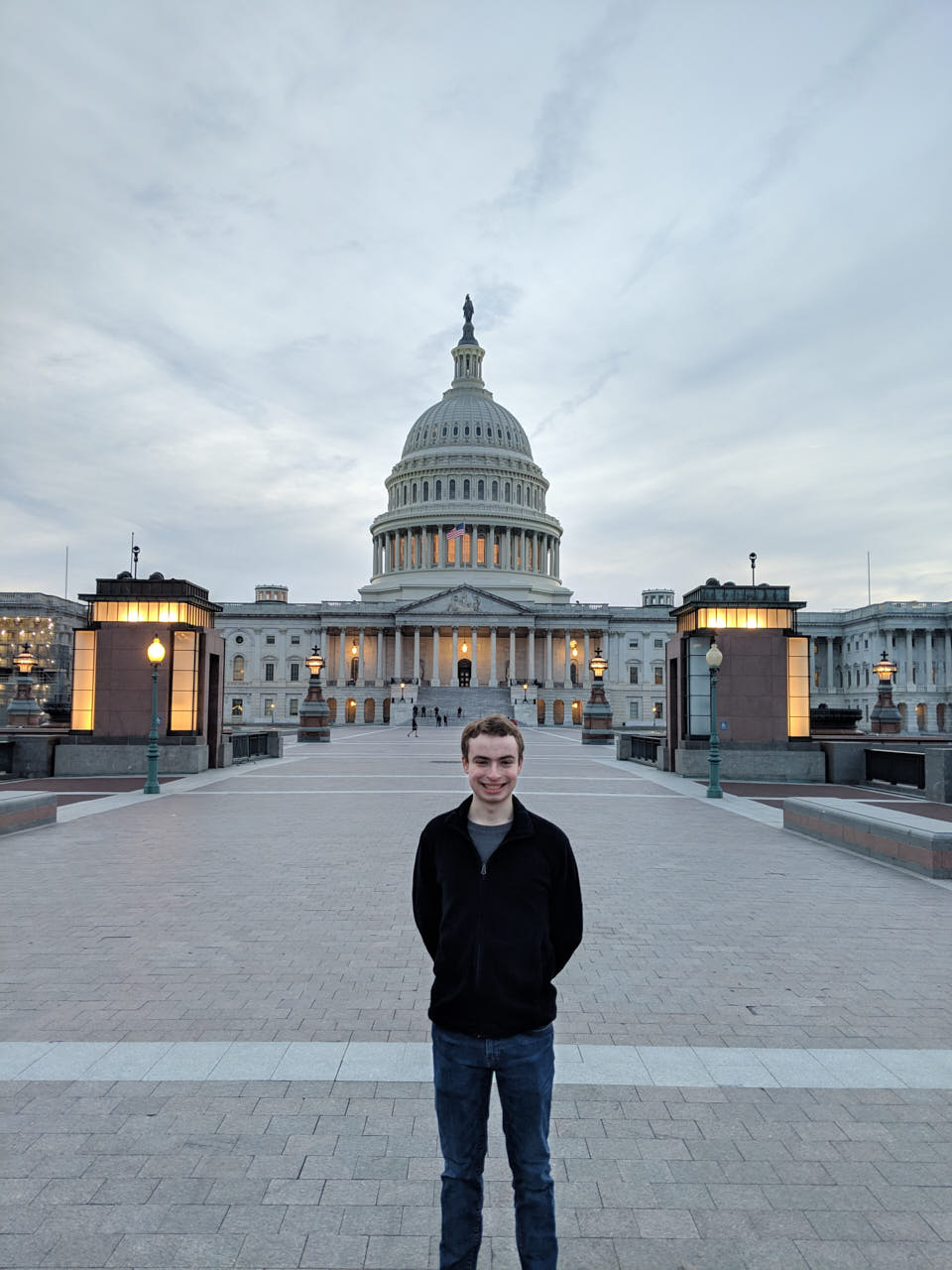
The result felt a little bit similar to recent events, as the ‘popular vote’ and the ‘electoral vote’ selected different candidates, with Theodore Roosevelt leading the popular vote but Woodrow Wilson narrowly clinching the electoral vote. In all, though, it was a fun and educational activity, and it was especially enjoyable to see classmates assume the personas of these important historical figures and, for example, deliver surprise speeches during lunch.
On Monday, we will begin our next case study, which revolves around 2nd Amendment rights in the U.S., and… we will leave for Spring Break! It is hard to believe that we are already about halfway through our semester here in DC: it’s been such an incredible experience so far, and I know that there is a lot more yet to come.
